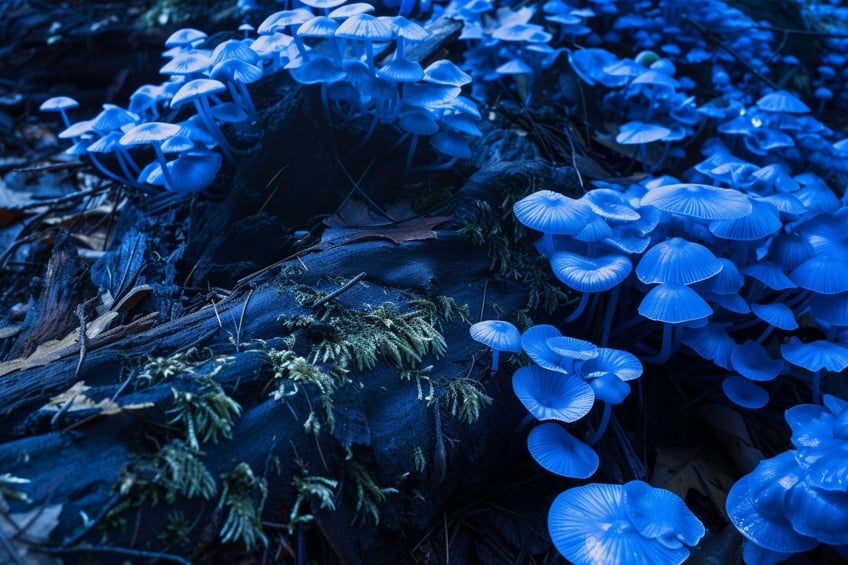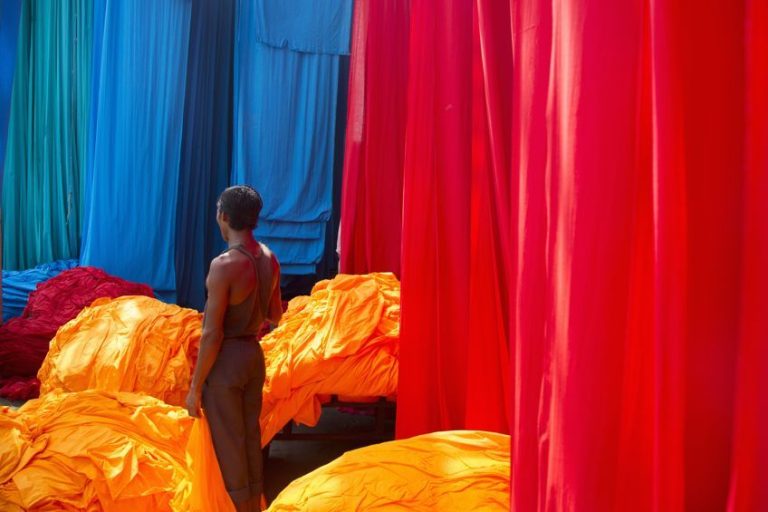55 Things That Are Blue in Nature – Blue Skies and Beyond
Staring out at the clear blue sky, I’m struck by the omnipresence of the color blue in our lives. It’s in the natural beauty of the ocean, the wings of a butterfly, and even the jeans we wear. This blog is a personal exploration of all things blue – from nature’s masterpieces to the blue objects we encounter daily. Let’s dive into the world of blue, uncovering its significance and the way it colors our perception of the world around us.
List of 55 Things That Are Blue in Nature
Nature is adorned with a myriad of blue wonders, from the expansive sky to the depths of the sea. Forget-me-nots, morpho butterflies, and mountain lakes are just a few examples among the 55 things that showcase the beauty of blue in the natural world. Whether it’s a delicate flower or a majestic creature, each element painted in blue invites us to admire nature’s tranquility and splendor. Below, take a look at 55 things that are blue in nature!
Ocean
The ocean’s captivating blue stems from the water’s absorption of colors in the red part of the light spectrum and its reflection of the sky above. This interplay results in a dynamic range of blues, from pale cerulean to deep sapphire, illustrating the ocean’s vastness and depth. For color experts, the ocean is a prime example of how light and matter interact to produce color, offering endless inspiration for design and art.

Blue Morpho Butterfly
The Blue Morpho Butterfly’s wings are covered in microscopic scales that reflect light, creating a vivid iridescent blue that is almost unparalleled in the natural world. This shade of blue is not a result of pigment but of structural coloration, making it a fascinating subject for color experts interested in how colors are created and perceived.
The butterfly’s blue can inspire various applications, from textiles to technology, mimicking its natural brilliance.
Blueberries
Blueberries possess a unique blue hue, one that’s actually a result of anthocyanin pigments. These pigments react to the pH levels within the fruit, resulting in the distinctive blue color on the berry’s surface. For those studying color, blueberries offer a perfect example of natural pigmentation and how factors like acidity can influence color appearance in flora.

Bluebells
The charming blue of bluebells is a herald of spring, their bell-shaped flowers painting woodlands in shades of soft, ethereal blue. This particular blue, often associated with enchantment and mystery, serves as a beautiful example of nature’s palette.
It’s a hue that captures the essence of rebirth and new beginnings, providing ample inspiration for in various fields.
Cornflowers
Cornflowers exhibit a strikingly vibrant blue that stands out in nature. This blue has historically been sought after in art and dyeing, symbolizing richness and depth of color. For color lovers, cornflowers represent a natural source of blue pigment, which has been challenging to reproduce artificially, embodying the quest for the perfect blue in historical textiles and paintings.

Blue Jay
The Blue Jay’s plumage showcases a brilliant blue on its wings and tail, created through light scattering by the structural arrangement of the feathers. This is another example of structural color, offering insight into how light and structure can combine to create vivid colors in the animal kingdom.
The Blue Jay’s blue is a dynamic hue that changes in intensity with the light, providing a fascinating study for color theory and application.
Blue Whale
The blue-gray color of the Blue Whale reflects its adaptation to the marine environment, camouflaging it within the ocean’s vast waters. This subtle yet powerful hue symbolizes the magnitude and mystery of the ocean, offering a perspective on how color plays a role in survival and natural selection. The Blue Whale’s coloration is a testament to the nuanced palette of the natural world, inspiring a deeper appreciation for the subtleties in color variation.

Sapphire
Sapphires are treasured for their mesmerizing blue, a color that ranges from deep velvety blue to lighter cornflower blue. This gemstone’s color is due to the presence of trace elements like iron and titanium, illustrating how mineral composition affects coloration.
Sapphires provide a rich study in the interaction between light, material, and perception, embodying the depth and complexity of blue.
Glaciers
The ethereal blue within glaciers is a result of light penetrating dense ice and being absorbed except for the blue, which is scattered and transmitted. This natural phenomenon creates a surreal, deep blue that captures the essence of cold and purity. Glaciers offer a profound example of blue’s variability and depth, serving as a powerful symbol of the natural world’s beauty and fragility.
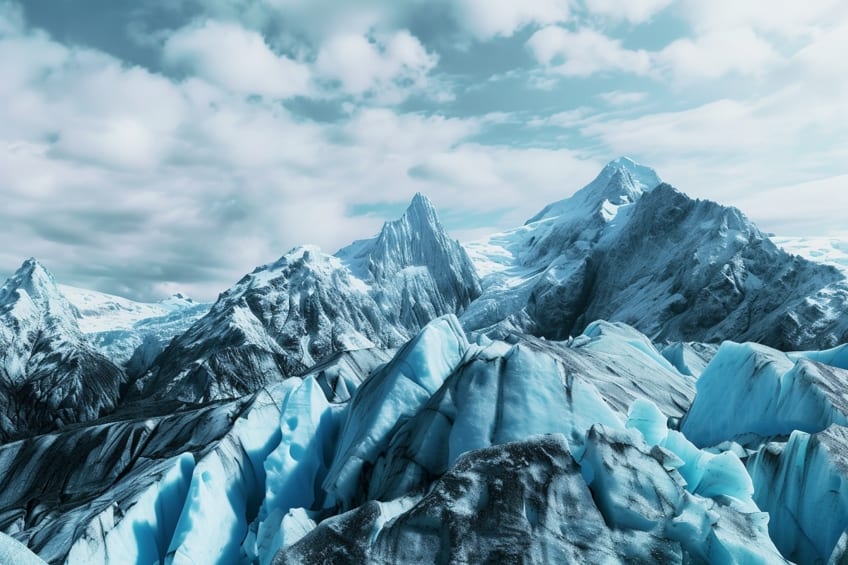
Blue Dasher Dragonfly
The Blue Dasher Dragonfly is a fascinating subject for color analysis, its body showcasing a vibrant blue that stands out against natural backdrops. This particular shade of blue is not only eye-catching but serves as a camouflage among the reflections of the water where it hunts.
The dragonfly’s blue is a prime example of nature’s use of color for both beauty and functionality, highlighting the complexity of color in animal behavior and survival strategies.
Indigo Bunting
The Indigo Bunting’s feathers exhibit a rich, deep blue that can almost seem iridescent under sunlight. This blue is a result of the microscopic structure of the feathers rather than pigment, which diffracts light to create the vivid coloration. As a color expert, one appreciates the indigo bunting’s use of structural coloration to achieve a hue that is both a signal to mates and a camouflage in the shadowed foliage.

Blue Starfish
The Blue Starfish, or Blue Sea Star, adorns the ocean floor with its magnificent shade of blue, contributing to the kaleidoscopic palette of coral reefs. This blue is not only a visual marvel but also a reflection of the starfish’s adaptations to its environment.
The color can range from a pale sky blue to a rich cobalt, demonstrating the diversity of blue hues in marine life and their aesthetic and ecological significance.
Blue Ringed Octopus
The vibrant blue rings of the Blue Ringed Octopus are a stunning example of aposematic coloration, where bright colors warn predators of toxicity. The contrast between the blue rings and the octopus’s yellowish body creates a visual warning signal that is both beautiful and deadly. This use of blue highlights the color’s versatility in nature, serving as both an attractant and a deterrent.

Azure Kingfisher
The Azure Kingfisher’s plumage is a breathtaking showcase of blues, blending azure, cobalt, and cerulean. This bird’s coloration is a testament to the depth and vibrancy of blue in the natural world, serving both as camouflage against water when hunting and as a display feature.
The varying shades of blue offer insights into the adaptive purposes of color in avian species, marrying aesthetics with function.
Blue Coral
Blue Coral stands out in the underwater landscape, its distinct blue coloration offering a striking contrast to the commonly expected greens and browns of coral reefs. This hue is a rare occurrence in corals, making it a subject of interest for both its beauty and its rarity. The blue of these corals is a window into the diverse strategies of marine life for attracting symbiotic organisms and reflects the spectral quality of light underwater.

Lapis Lazuli
Lapis Lazuli, with its deep celestial blue, has been revered through ages for its color and rarity. This gemstone’s rich ultramarine color, often flecked with golden pyrite, resembles a starry night sky, making it a favorite for both jewelry and pigment.
Its enduring appeal lies in the depth of its color, offering a timeless example of blue’s significance in culture and art.
Blue Agave
The Blue Agave plant, with its silvery-blue leaves, is not only essential for the production of tequila but also a stunning example of how blue hues can manifest in flora. The bluish tint serves as a protective mechanism against the harsh sun, reflecting sunlight and reducing water loss. This adaptation showcases the functional beauty of blue in the plant kingdom, merging utility with aesthetic appeal.

Blue Poison Dart Frog
The Blue Poison Dart Frog’s vibrant blue skin is a vivid warning of its toxicity to predators, an example of nature’s use of color for protection. The intensity of the blue can vary from electric to a more subdued hue, depending on the species and environment.
This frog embodies the dual nature of beauty and danger, illustrating how color can communicate vital survival information in the animal world.
Blue Spruce
The Blue Spruce tree, with its unique bluish-green needles, offers a cooling visual respite in landscapes. This subtle blue tinge, which can vary from a soft silver-blue to a deeper hue, helps the tree to minimize water loss and protect from sun damage. It’s a prime example of how even subtle color variations play a critical role in the survival and adaptation of plant species.

Blue Iceberg
Blue Icebergs are majestic natural sculptures, their deep blue hues revealing the dense ice’s ancient origins. This blue, more intense than any sky or ocean, speaks of the compression of snow over millennia, trapping air and scattering light in such a way that only the blue wavelengths emerge.
They are a testament to the power and beauty of natural processes, showcasing the spectrum of blue in its most dramatic and pure form.
Blue-footed Booby
The Blue-footed Booby is renowned for its striking blue feet, a distinctive trait used in mating rituals. The brightness of the blue can indicate the health and virility of the individual, serving as a fascinating example of how color is used in the natural world to convey crucial information about reproductive fitness. During elaborate courtship displays, the Blue-footed Booby male lifts his feet high and struts before the female, showcasing the intensity of his blue coloration.

Blue Shark
The Blue Shark’s elegant form is accentuated by its distinct blue-tinted skin, which fades into a lighter underbelly. This coloration serves as a form of camouflage in the vast, open ocean, blending seamlessly with the water from above and below.
As a color expert, I appreciate the subtlety of its hue, which exemplifies the practical application of color for survival in nature’s vast palette.
Clitoria ternatea (Butterfly Pea)
Clitoria ternatea, commonly known as the Butterfly Pea, boasts flowers of a vivid, almost surreal blue. This plant is a perfect example of how nature experiments with the blue pigment, creating a hue that is both attractive to pollinators and visually striking to humans. The depth and vibrancy of its flowers offer insights into the rare occurrence of true blue in the botanical world, making it a subject of fascination for color theory.
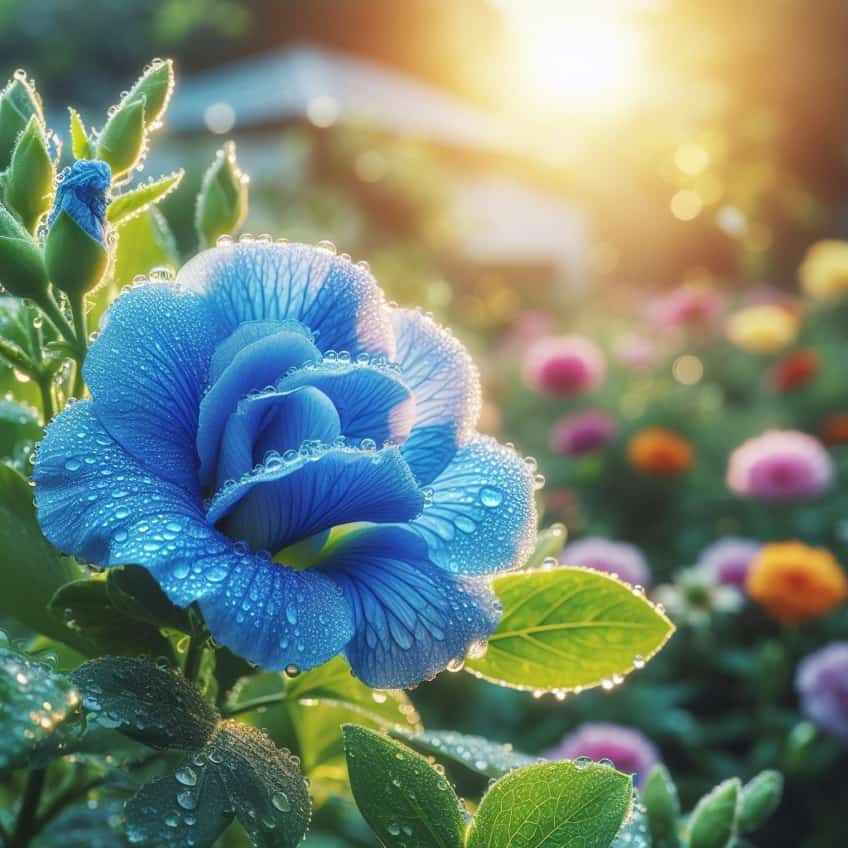
Blue Copper Butterfly
The Blue Copper Butterfly, with its metallic blue wings, showcases an exquisite example of iridescence in the insect kingdom. This shimmering blue, which changes intensity and hue with the angle of light, highlights the complexity of color perception and the role of structure in creating color.
It’s a vivid reminder of the dynamic nature of blue in the wild, capturing the essence of ephemeral beauty.
Gentian
Gentians are renowned for their deep blue petals, a rarity in the floral world where true blue is elusive. These flowers thrive in alpine habitats, their striking blue a stark contrast against the greens and browns of their environment. The gentian’s hue is a testament to blue’s symbolic association with depth and stability, offering a natural model for exploring the psychological impacts of color.

Blue Lobster
The Blue Lobster is a rare and fascinating anomaly, its vibrant blue shell resulting from a genetic variation that affects its pigment production. This striking blue not only makes the lobster a curiosity among its peers but also highlights the diversity of blue in nature.
As a color expert, the blue lobster serves as a vivid example of how genetic diversity can manifest in visually stunning ways.
Blue Quartz
Blue Quartz, with its soothing, translucent blue, carries the serene qualities often associated with the color blue. This mineral’s gentle hue can vary from a light, sky-like blue to a deeper shade, mirroring the tranquility of the ocean. It’s a beautiful example of how blue can convey calmness and clarity, making it a favorite in both jewelry and interior design for its aesthetic and emotional appeal.

Blue Racer Snake
The Blue Racer Snake is notable for its bluish body, an uncommon coloration among reptiles. This subtle blue sheen, which can be more pronounced in certain lighting, adds to the snake’s mystique and beauty.
For color experts, the Blue Racer exemplifies the adaptive uses of color in nature, blending into shadows and foliage with a hue that is both protective and captivating.
Blue Grosbeak
The Blue Grosbeak, with its rich blue plumage, is a stunning sight. This bird’s feathers carry a depth of blue that is both rare and mesmerizing, highlighted further by contrasting marks. The grosbeak’s coloration is a fine example of how blue can dominate in the animal kingdom, serving purposes of attraction and identification, and offering insights into the symbolism and emotional impact of blue in the natural context.
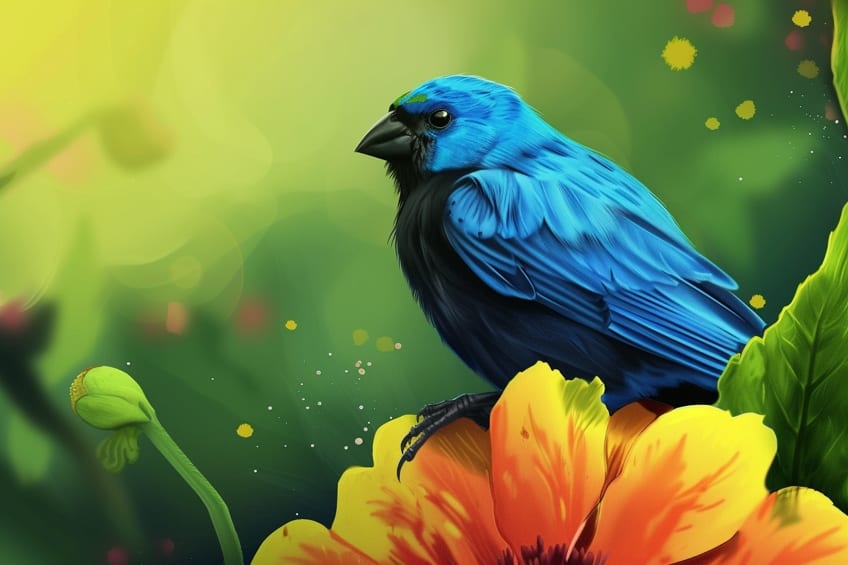
Blue Pansy Butterfly
The Blue Pansy Butterfly displays an intricate pattern of blue on its wings, set against a backdrop of darker shades. This striking use of blue not only makes the butterfly a visual delight but also plays a role in communication and camouflage.
The pansy’s wings reflect the complexity of blue as a color that can both blend in and stand out, embodying the dual nature of visibility and concealment.
Delphinium
Delphiniums, with their tall spikes of blue flowers, bring a touch of the sky to the garden. Their range of blues, from soft pastels to deep indigos, showcases the versatility and depth of the color in floral design. For those interested in the emotional and aesthetic qualities of color, delphiniums offer a rich palette for exploring the nuances of blue and its ability to evoke a sense of wonder and serenity.

Blue Fungi
Certain species of fungi exhibit vibrant blue colors, a rare and intriguing phenomenon in the fungal kingdom. These fungi, often found in shaded forest floors, add a splash of color to the understory, challenging our expectations of natural hues.
The blue fungi exemplify the unexpected places blue can appear in nature, serving as a reminder of the diversity and mystery of color in the wild.
Blue-tongued Skink
The Blue-tongued Skink is remarkable for its vivid blue tongue, a striking contrast against its otherwise earthy tones. This unique feature serves as a defense mechanism, startling predators and observers alike. The skink’s blue tongue highlights the use of color as a tool for survival, showcasing how even the most subtle and seemingly aesthetic features of an organism can be pivotal for its survival and success in the wild.

African Lily (Agapanthus)
The African Lily, with its clusters of deep to pale blue flowers, is a testament to the captivating power of blue in the plant kingdom. Its blooms, resembling fireworks against the green foliage, draw the eye and soothe the spirit, embodying the tranquility and depth often associated with blue.
As a color enthusiasts, I see Agapanthus as a perfect example of how blue can be both a focal point and a calming presence in garden design.
Siberian Squill
Siberian Squill bursts onto the scene in early spring with its vivid blue petals, creating a striking contrast against the melting snow. This small but mighty flower symbolizes the resilience and renewal of nature, with a shade of blue that captures the essence of the sky just after dawn. Its ability to bring a splash of color to the drabness of late winter landscapes showcases the invigorating presence of blue in the natural world.
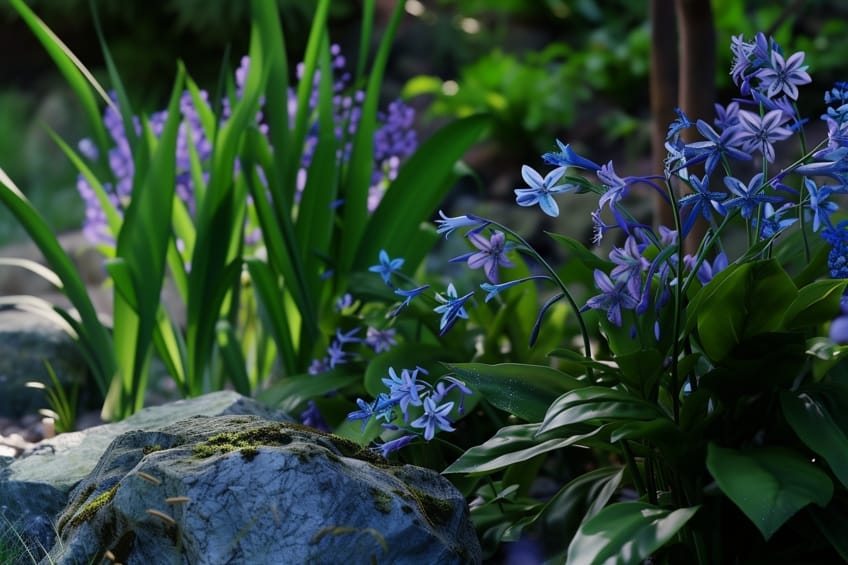
Blue Damselfly
The Blue Damselfly, with its slender body and delicate wings, is a living jewel of the water’s edge. The iridescent blue that adorns its form is a marvel of nature’s artistry, blending seamlessly with the ripples of streams and ponds.
This creature exemplifies the ethereal and fleeting beauty of blue, reminding us of the color’s association with water, sky, and the ephemeral moments of life.
Glaucus Atlanticus (Blue Dragon)
Glaucus Atlanticus, also known as the Blue Dragon, is a marvel of the marine world, drifting along the ocean’s surface with hues of blue that mirror the sea and sky. This small sea slug, with its otherworldly appearance, highlights the diversity of blue in nature, from the palest shades to deep, vibrant tones. Its coloration is not just for beauty; it serves as camouflage against predators from below and above, showcasing the adaptive use of blue in aquatic life.

Blue Morpho Caterpillar
Before transforming into the stunning Blue Morpho Butterfly, the caterpillar phase also incorporates blue, hinting at the magnificent creature it will become. This use of blue, even in its larval stage, speaks to the continuity of color through the life cycle, offering a glimpse into the transformative power of nature.
The Blue Morpho Caterpillar serves as a reminder that blue, in all its shades, is a symbol of potential and metamorphosis in the natural world.
Linckia laevigata (Blue Linckia Sea Star)
The Blue Linckia Sea Star is a radiant inhabitant of tropical seas, its bright blue coloration making it a standout on the ocean floor. This starfish not only adds a splash of color to the marine landscape but also demonstrates the range of blue hues found in oceanic life. Its vibrant shade is a natural attractant for divers and marine enthusiasts, embodying the allure and mystery of the underwater world.

Bluebottle Fly
Despite its common presence, the Bluebottle Fly captivates with its metallic blue color, turning a usually overlooked insect into a subject of fascination. The iridescent sheen of its body plays with light, showcasing the dynamic qualities of blue and its ability to transform the mundane into the extraordinary.
This fly’s coloration is a reminder of the unexpected beauty found in everyday nature, highlighting the versatility of blue across species.
Blue Nudibranch
Blue Nudibranchs are a testament to the expressive palette of the ocean, with their various shades of blue ranging from sky to indigo. These sea slugs are not just a display of nature’s artistry but also an example of how color serves as camouflage, communication, and warning in the marine environment. Their striking appearance offers endless inspiration for understanding the emotional and aesthetic impact of blue in the natural world.
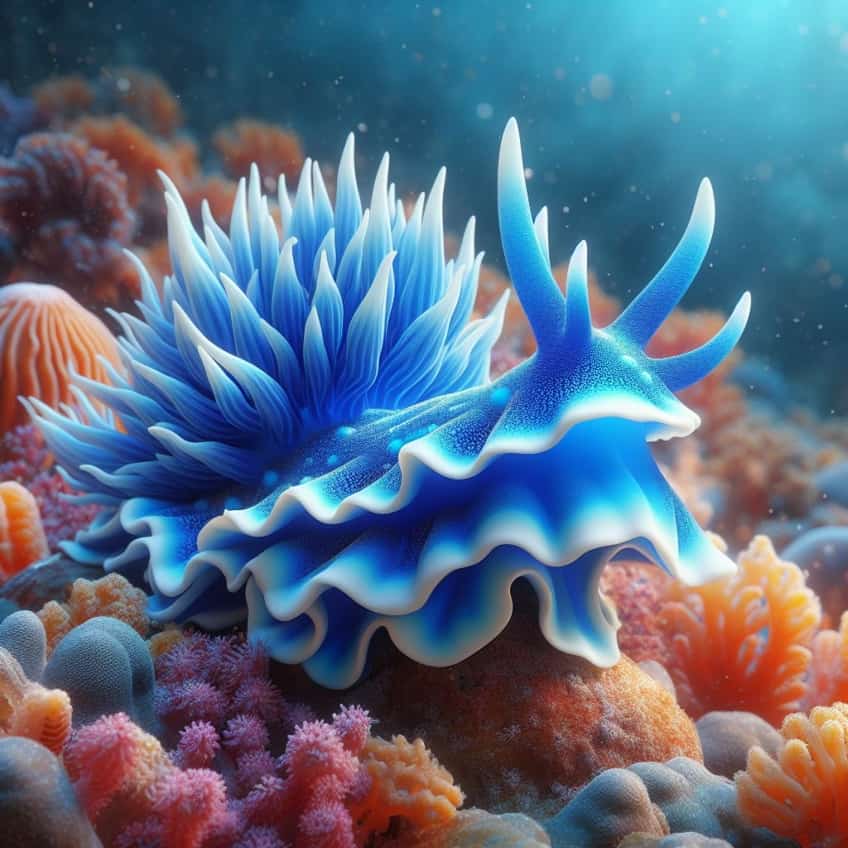
Blue Halo Mushroom
The Blue Halo Mushroom adds a mystical element to the forest floor, its cap rimmed with a distinctive blue coloration that seems almost otherworldly. This unique feature makes it a fascinating study in how fungi use color, not just for attracting spore dispersers but also for standing out in the dim forest light.
The blue halo serves as a natural highlight, drawing attention to the often-overlooked beauty and complexity of fungal life.
Vanda Orchids
Vanda Orchids, with their breathtaking shades of blue, challenge the rarity of true blue in the floral world. These orchids, ranging from soft azure to deep violet-blue, showcase the diversity and vibrancy of blue in tropical flowers. I admire the Vanda Orchid for its ability to capture the imagination and evoke a sense of wonder, illustrating blue’s enduring appeal and its symbolic connection to rarity and beauty in nature.

Hydrangea
Hydrangeas are a fascinating study in the science of color. Their ability to bloom in shades from pink to deep blue is influenced by the soil’s pH level, a perfect example of nature’s chemistry at play. Blue hydrangeas, in particular, symbolize an enchanting blend of mystery and beauty, their vibrant hues a testament to the delicate balance of elements in their environment.
As a color expert, I see them as a living canvas, reflecting the profound impact of external conditions on color expression.
Blue Diamonds
Blue diamonds are among nature’s most spectacular treasures, their mesmerizing hue resulting from the presence of boron within the crystal structure. These gems are a study in rarity and value, with their stunning blue tones ranging from the palest sky at dawn to the deep blue of the ocean depths. They embody the allure of the color blue, representing both the Earth’s hidden riches and the pinnacle of gemological beauty.
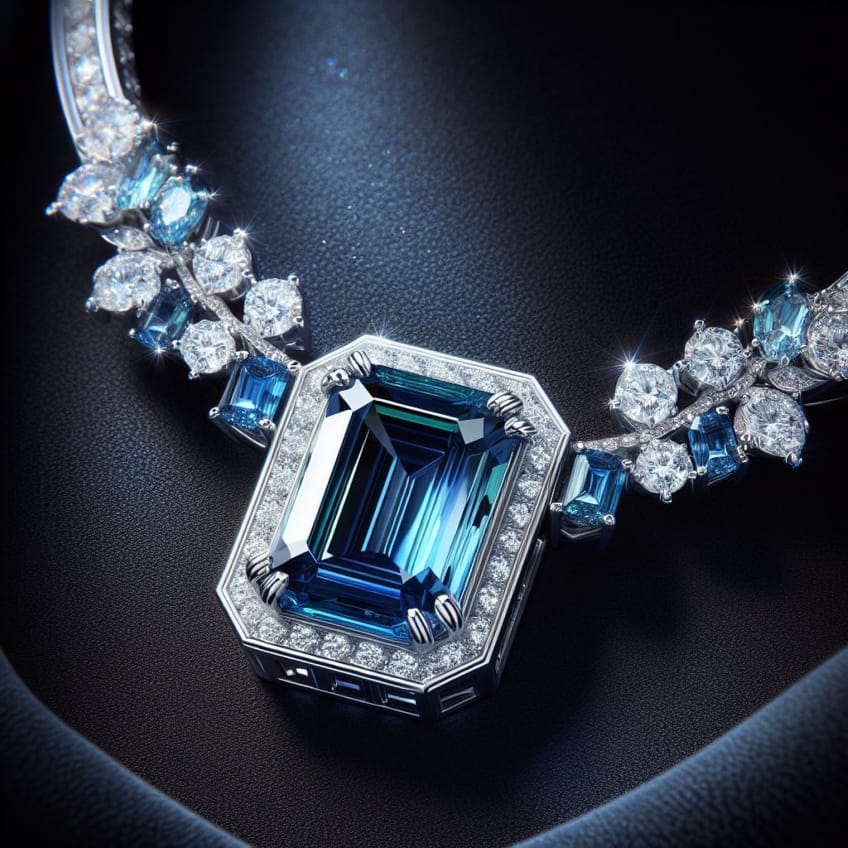
Blue Star Fern
The Blue Star Fern, with its bluish-green fronds, brings a touch of serene elegance to any setting. This plant’s subtle coloration is a gentle reminder of the cool, understated side of the color blue, evoking a sense of calm and tranquility.
Its foliage offers a visual respite, blending beautifully with both vibrant and muted color palettes, making it a beloved choice for indoor gardeners and color enthusiasts alike.
Blue Grama Grass
Blue Grama Grass, with its blue-green blades, paints the North American plains in strokes of subtle color. Its resilience and the way its hues shift with the light make it a natural masterpiece of landscape design. For those of us who revel in the nuances of color, Blue Grama Grass exemplifies how even the most understated shades contribute to the rich tapestry of our natural environment.
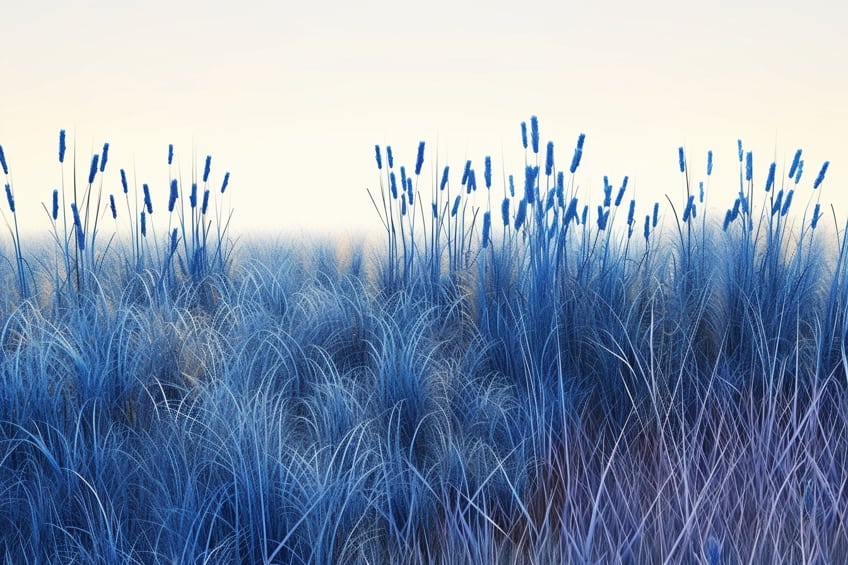
Blue Penguins
Blue Penguins, with their unique slate-blue plumage, are a delightful anomaly in the avian world. These diminutive creatures add a splash of unexpected color to their coastal habitats, challenging our perceptions of penguin black-and-white dichotomy.
Their presence is a reminder of nature’s penchant for surprise, offering a glimpse into the evolutionary canvas where even the smallest details are painted with purpose.
Chicory
Chicory flowers, with their striking blue petals, are a vivid landmark along roadsides and in meadows. Their bright blue hue stands out against the greens of nature, drawing pollinators and the admiration of passersby. As a testament to resilience and beauty, chicory symbolizes the enduring appeal of blue in the wild, flourishing in even the most unexpected places.
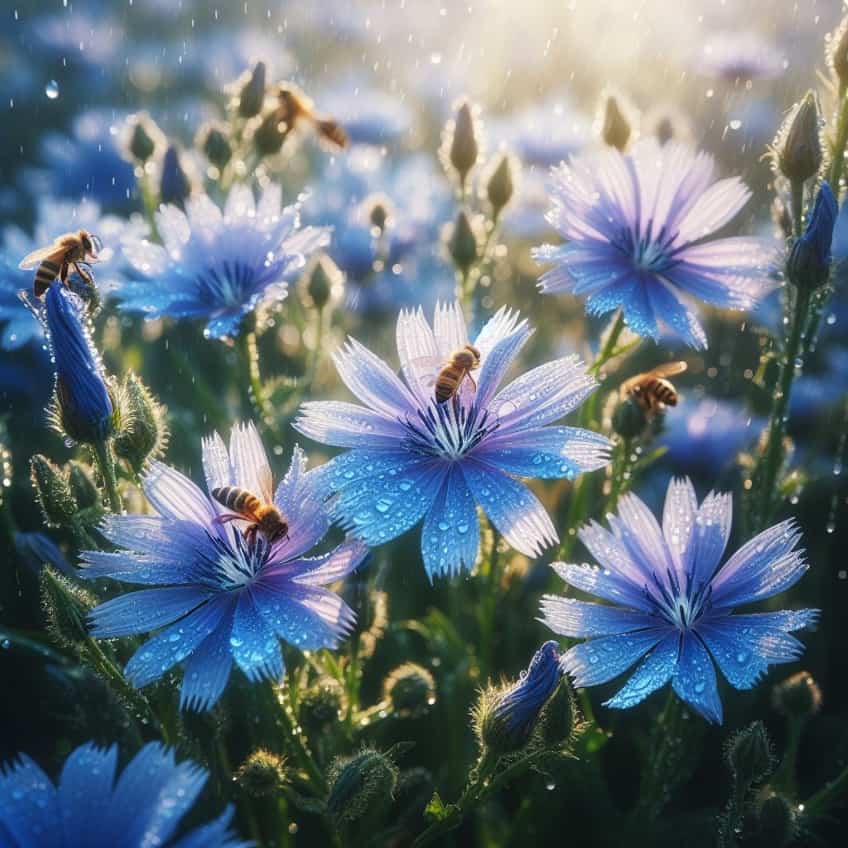
Blue Dacnis
The Blue Dacnis is a jewel of the avian world, its dazzling blue plumage a spectacle against the lush greens of its habitat. This bird exemplifies the vibrancy of blue in nature, its feathers reflecting the sky and waters it resides above.
In the study of color, the Blue Dacnis represents the dynamic interplay between color and light, showcasing the splendor of the natural world.
Blue Squill
Blue Squill flowers are a herald of spring, their azure blooms a stark contrast to the muted tones of the season’s end. These plants are a testament to the persistence and adaptability of color in nature, with their vibrant blue shades piercing through the last of winter’s grasp. For a color expert, Blue Squill embodies the rejuvenating power of blue, signaling renewal and growth.

Indigo Snake
The Indigo Snake, with its glossy blue-black sheen, offers a unique perspective on color in the animal kingdom. This reptile’s skin captures the essence of the indigo dye, once prized for its depth and durability.
Its presence in nature is a reminder of the elegance and mystique associated with the color blue, representing strength and serenity in equal measure.
Salvia
Salvias, with their deep blue blooms, are a staple in gardens seeking a touch of cool vibrancy. These flowers not only attract pollinators but also the eyes of those who appreciate the depth and complexity of blue. In the language of color, salvia stands out as a symbol of wisdom and calm, its hues inviting contemplation and peace.

Azure Bluet
The Azure Bluet damselfly, with its delicate blue body, is a testament to the ethereal beauty of blue in nature. Hovering above water and meadows, it embodies the lightness and freedom associated with the color blue.
Its presence is a lesson in the balance of color, demonstrating how even the smallest creatures contribute to the visual harmony of their ecosystems.
Blue Fescue
Blue Fescue grass brings a touch of sophistication to landscapes with its blue-gray foliage. This ornamental grass is a favorite among designers and gardeners for its ability to provide contrast and texture. It encapsulates the cool, calming aspects of blue, making it a visual anchor in garden compositions and a study in the serene side of the color spectrum.

In summary, the color blue, though seemingly scarce in the natural world, manifests in a remarkable array of elements, from the vastness of the ocean and sky to the exquisite beauty of flowers like the bluebell and bird species such as the blue jay. This exploration of fifty-five blue things in nature underscores the extraordinary diversity and richness of our planet. It serves as a reminder of the intricate balance and interconnectedness of all living things, urging us to appreciate and protect the natural wonders that surround us. As we continue to discover and marvel at the shades of blue that nature has to offer, it becomes clear that this color, in all its hues and forms, is a testament to the endless creativity of the natural world.
Frequently Asked Questions
Are There Any Blue Plants or Trees in Nature?
Yes, there are several examples of blue plants and trees found in nature, each with its unique adaptations and characteristics. Blue spruce trees, known for their distinctive bluish-gray foliage, are native to North America and are often cultivated for ornamental purposes. Blue agave plants, native to Mexico, feature blue-green leaves and are primarily cultivated for their sap, which is used to make tequila. Blue algae, also known as cyanobacteria, are microscopic organisms found in various aquatic environments and play essential roles in aquatic ecosystems. Blueberries, a popular fruit enjoyed worldwide, grow on shrubs and bushes and are prized for their sweet-tart flavor and vibrant blue color.
What Are Some Blue Natural Phenomena or Occurrences?
Nature showcases numerous awe-inspiring phenomena with blue hues. One of the most familiar is the blue sky, resulting from the scattering of sunlight by the Earth’s atmosphere. Blue icebergs, formed from compacted ice with minimal air bubbles, can be found in polar regions. Blue auroras, or the northern lights and southern lights, occur when charged particles from the sun interact with gases in the Earth’s atmosphere, producing stunning displays of blue, green, and purple hues. In oceans, bioluminescent organisms emit blue light, creating mesmerizing displays of glowing blue waves at night.
Are There Any Blue Animals in Nature?
Yes, there are several fascinating examples of blue animals found in nature. One iconic example is the blue morpho butterfly, known for its striking iridescent blue wings. Blue jays, with their vibrant blue plumage, are also commonly seen in many regions. Additionally, the blue poison dart frog, native to Central and South America, boasts a bright blue coloration as a warning signal to predators. Blue tang fish, famous for their appearance in the movie Finding Nemo, are another notable example of blue-hued creatures found in coral reef ecosystems. Lastly, blue whales, the largest animals on Earth, often appear blue underwater due to the way light interacts with their skin.
In 2005, Charlene completed her Wellness Diplomas in Therapeutic Aromatherapy and Reflexology from the International School of Reflexology and Meridian Therapy. She worked for a company offering corporate wellness programs for a couple of years, before opening up her own therapy practice. It was in 2015 that a friend, who was a digital marketer, asked her to join her company as a content creator, and this is where she found her excitement for writing.
Since joining the content writing world, she has gained a lot of experience over the years writing on a diverse selection of topics, from beauty, health, wellness, travel, and more. Due to various circumstances, she had to close her therapy practice and is now a full-time freelance writer. Being a creative person, she could not pass up the opportunity to contribute to the Art in Context team, where is was in her element, writing about a variety of art and craft topics. Contributing articles for over three years now, her knowledge in this area has grown, and she has gotten to explore her creativity and improve her research and writing skills.
Charlene Lewis has been working for artincontext.org since the relaunch in 2020. She is an experienced writer and mainly focuses on the topics of color theory, painting and drawing.
Learn more about Charlene Lewis and the Art in Context Team.
Cite this Article
Charlene, Lewis, “55 Things That Are Blue in Nature – Blue Skies and Beyond.” Art in Context. February 14, 2024. URL: https://artincontext.org/55-things-that-are-blue-in-nature/
Lewis, C. (2024, 14 February). 55 Things That Are Blue in Nature – Blue Skies and Beyond. Art in Context. https://artincontext.org/55-things-that-are-blue-in-nature/
Lewis, Charlene. “55 Things That Are Blue in Nature – Blue Skies and Beyond.” Art in Context, February 14, 2024. https://artincontext.org/55-things-that-are-blue-in-nature/.


